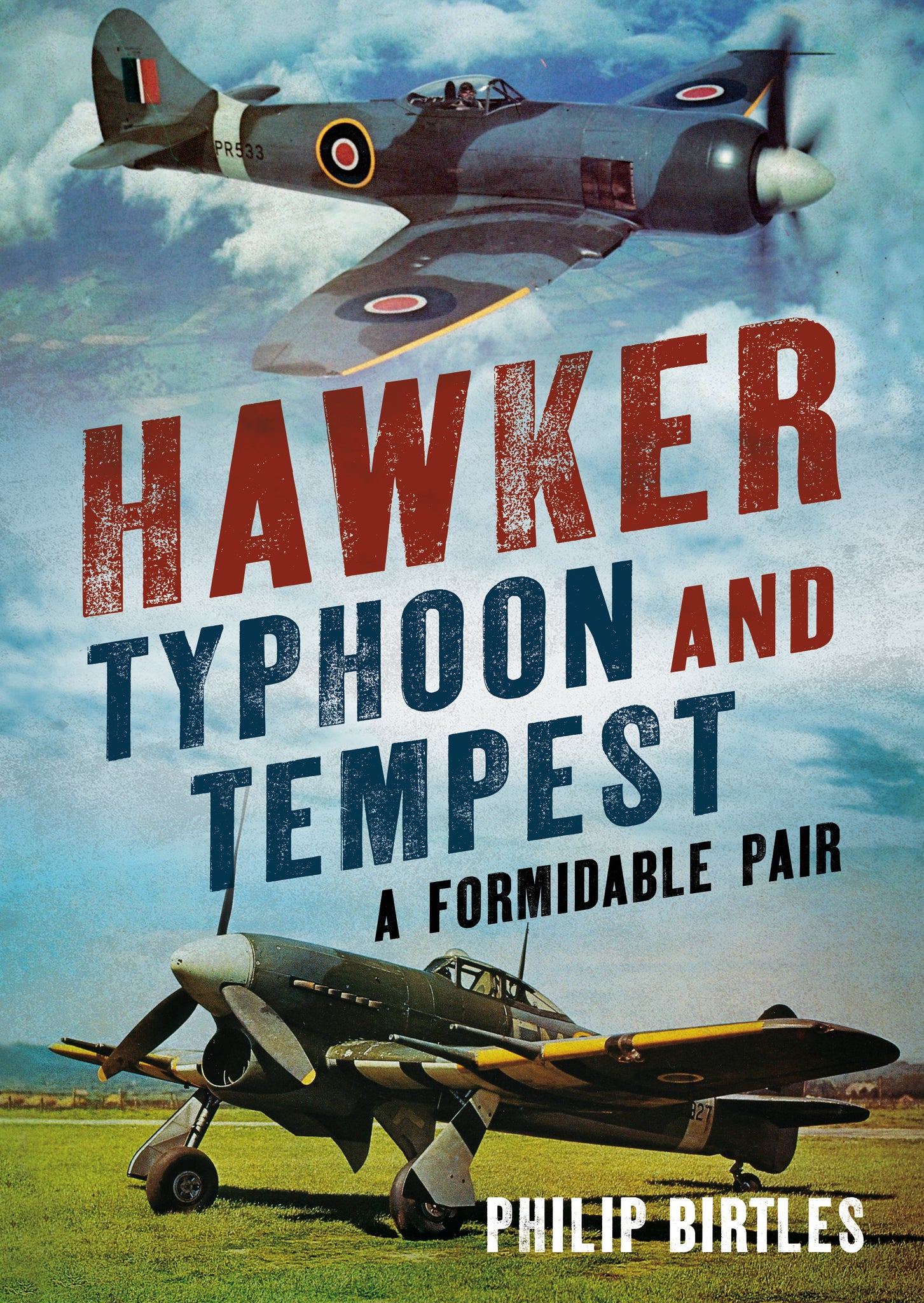
Author(s): Philip Birtles


With technology of the Hurricane being at the end of the biplane combat era, there was an urgent requirement for a modern fighter with a capability ahead of anticipated fighter development for the Luftwaffe.
Led by Sydney Camm, the Hawker design team created the all-metal stressed skin structure and the Typhoon was powered by the revolutionary Napier Sabre engine. Whereas the Hurricane had been developed in peacetime, the Typhoon was designed during the war, when the urgency of the programme caused the development of both the airframe and engine to be accelerated, resulting in teething troubles not being fully solved when the aircraft entered service with the RAF.
The much-improved Tempest used the same engine and basic fuselage with thinner lamina flow wings, giving improved performance at high altitude and allowing the destruction of V-1s. Both aircraft made a significant impact on the victory by the Allies during the Second World War, although their low-level ground attack missions were extremely hazardous and resulted in high losses.
| BOOK ISBN | 9781781556900 |
| FORMAT | 248 x 172 mm |
| BINDING | Hardback |
| PAGES | 288 pages |
| PUBLICATION DATE | 06 November 2018 |
| TERRITORY | World |
| ILLUSTRATIONS | 222 black-and-white photographs |
With technology of the Hurricane being at the end of the biplane combat era, there was an urgent requirement for a modern fighter with a capability ahead of anticipated fighter development for the Luftwaffe.
Led by Sydney Camm, the Hawker design team created the all-metal stressed skin structure and the Typhoon was powered by the revolutionary Napier Sabre engine. Whereas the Hurricane had been developed in peacetime, the Typhoon was designed during the war, when the urgency of the programme caused the development of both the airframe and engine to be accelerated, resulting in teething troubles not being fully solved when the aircraft entered service with the RAF.
The much-improved Tempest used the same engine and basic fuselage with thinner lamina flow wings, giving improved performance at high altitude and allowing the destruction of V-1s. Both aircraft made a significant impact on the victory by the Allies during the Second World War, although their low-level ground attack missions were extremely hazardous and resulted in high losses.
| BOOK ISBN | 9781781556900 |
| FORMAT | 248 x 172 mm |
| BINDING | Hardback |
| PAGES | 288 pages |
| PUBLICATION DATE | 06 November 2018 |
| TERRITORY | World |
| ILLUSTRATIONS | 222 black-and-white photographs |
[custom_html]The Hawker Typhoon and Tempest were unbeatable in the hazardous ground attack role during the Second World War.
[/custom_html]
[smallDescription]The Hawker Typhoon and Tempest were unbeatable in the hazardous ground attack role during the Second World War.
[/smallDescription]
[tabs] [tab title="AUTHOR(S)"]Philip Birtles started work as an engineering apprentice at the de Havilland Aircraft Company in September 1957. Following the completion of his training, he was appointed as PA to John Cunningham—the famous Second World War night-fighter ace. Philip held a number of marketing positions over the remainder of his career in the aerospace industry, taking early retirement when Hatfield Aerodrome finally closed at the end of 1993. He spent over forty years as a trustee of the de Havilland Aircraft Museum, and he has written over thirty-five books.
[/tab] [/tabs][collection.author]philip-birtles[/collection.author][addtocart_collection]ww-ii-aviation[/addtocart_collection][collection]ww-ii-aviation[/collection][icon-new-always]
